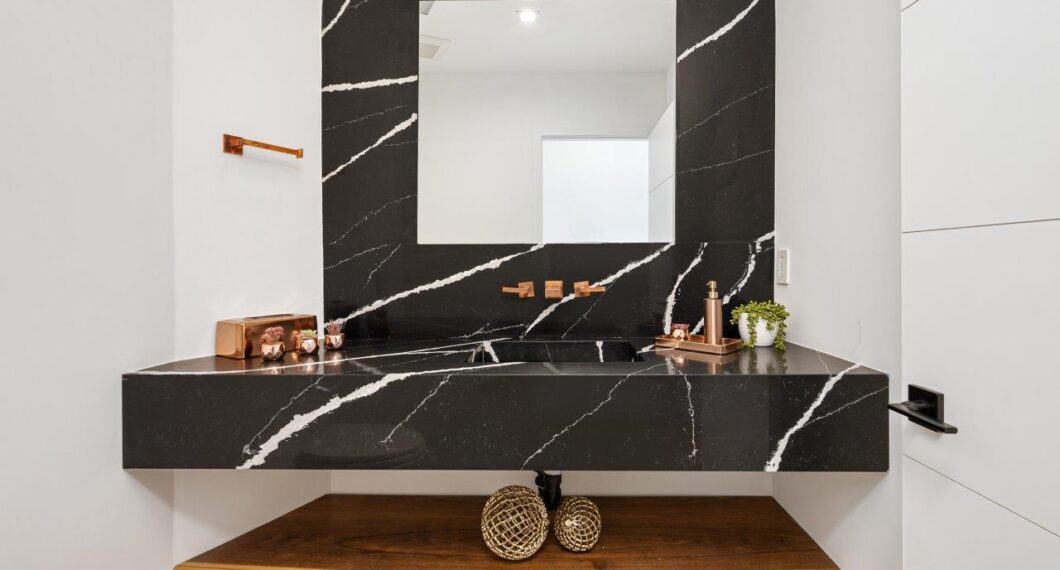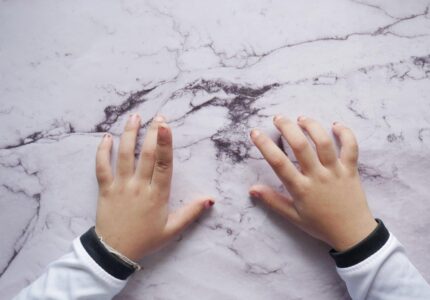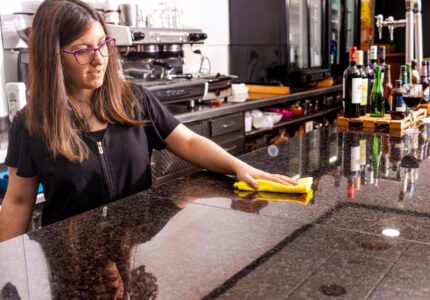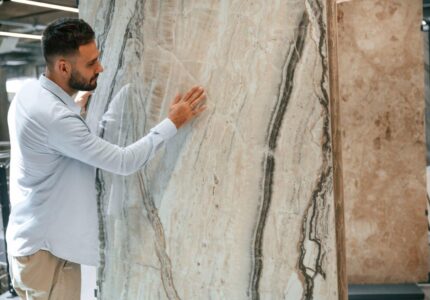Choosing the right granite or marble color for your bathroom vanity is a blend of design, practicality, and personal style. Bathrooms are smaller spaces, so color choices significantly impact the room’s atmosphere. Natural stone, such as granite or marble, is timeless, durable, and enhances the luxury of any bathroom. However, making the right choice requires understanding a few key factors.
The Role of Natural Stone in Bathroom Design
Natural stone is a versatile material. Its unique patterns and shades bring elegance and sophistication to bathrooms. Granite is known for its durability and resistance to moisture, making it ideal for high-traffic bathrooms. Marble, while slightly more porous, offers a classic look with its soft veining and luxurious appeal.
Both materials come in a wide range of colors and patterns, from bold blacks and whites to subtle creams and grays. Understanding these options is essential when trying to match the stone with your bathroom’s style and color scheme.
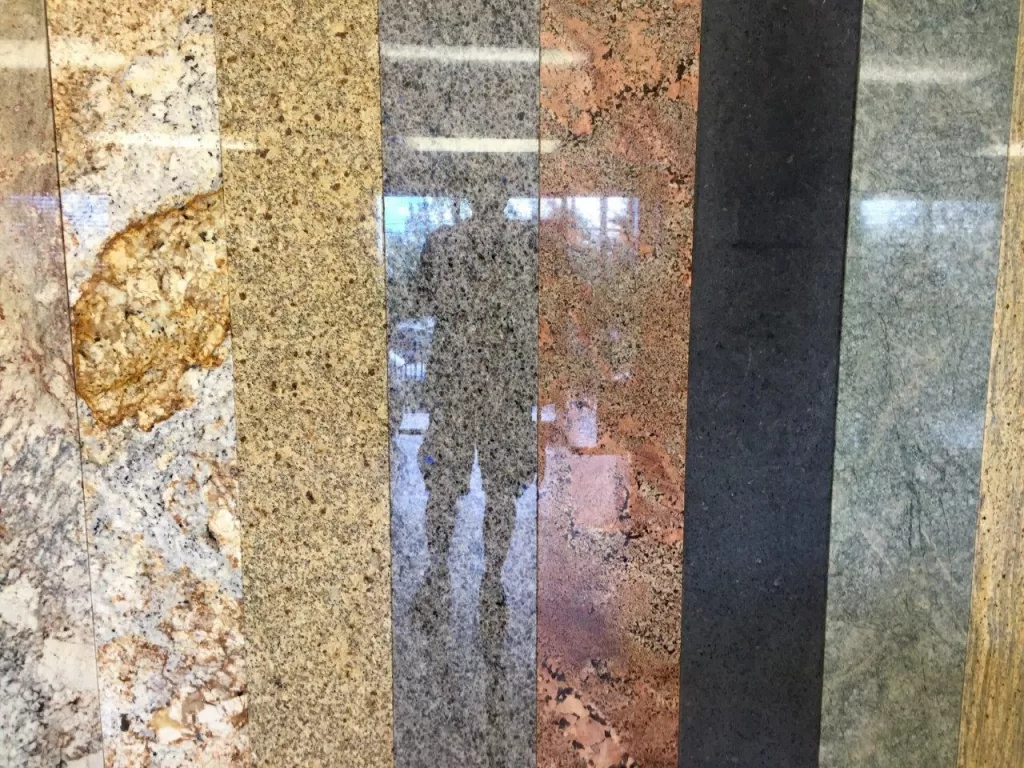
The Importance of Matching Stone with Bathroom Styles
Natural stone should complement your bathroom’s overall design. Here’s how it aligns with different styles:
- Modern Bathrooms:
- Look for sleek, minimalist designs. Colors like black granite or pure white marble work well. These shades create a clean and crisp atmosphere.
- Avoid busy patterns; they clash with modern simplicity.
- Traditional Bathrooms:
- Warmer tones like beige, cream, or brown granite provide a timeless feel.
- Marble with soft veining works well to enhance a vintage or ornate aesthetic.
- Rustic or Farmhouse Bathrooms:
- Earthy tones in granite, like green or tan, add a natural feel.
- Marble with rough textures or imperfect patterns blends beautifully with wood accents.
- Coastal Bathrooms:
- Light blues, whites, or grays mimic the ocean and sky. These colors work well in airy spaces with lots of natural light.
Factors to Consider When Choosing Stone Colors
- Lighting:
- Dark colors absorb light, making a small bathroom feel even smaller. Light-colored stone can make the space feel larger and more open.
- Existing Fixtures:
- Coordinate the stone with your vanity, tiles, and wall color. Use complementary or contrasting shades to create balance.
- Maintenance Needs:
- Granite generally requires less maintenance than marble. If you prefer darker stones like black granite, fingerprints and water spots may be more visible.
- Personal Preference:
- Ultimately, choose what makes you feel happy and comfortable. The bathroom is a personal space, so your preference matters most.
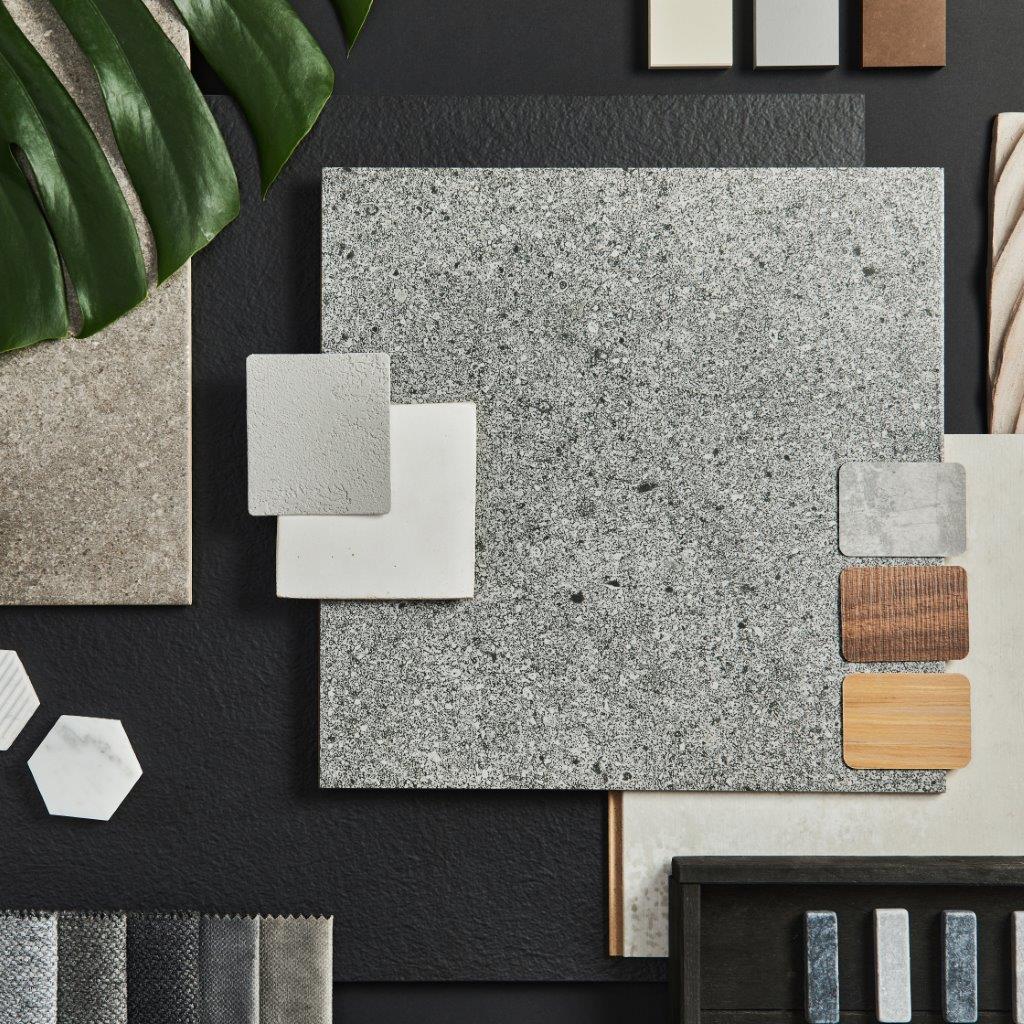
Examples from Real-Life Experiences
- Modern Elegance: A client with a sleek, black-and-white bathroom chose absolute black granite. It had no visible veining, creating a bold and seamless look. Paired with chrome fixtures, it was stunning.
- Vintage Warmth: Another homeowner picked beige marble with brown veining for a traditional bathroom. The vanity complemented the antique brass hardware and warm, cream-colored walls.
- Rustic Retreat: For a farmhouse bathroom, a customer chose granite in earthy tones of green and tan. The stone perfectly matched the reclaimed wood vanity and shiplap walls.
- Coastal Charm: A beach-themed guest bathroom featured light gray marble with soft white veining. It complemented the sky-blue walls and sandy-colored tiles.
Choosing the Perfect Granite or Marble Color for Your Bathroom Vanity
Step-by-Step Process for Selecting the Right Stone
- Assess Your Bathroom’s Style
- Determine the overall design theme: modern, traditional, rustic, or coastal.
- Take note of existing elements like wall color, flooring, and hardware finishes.
- Example: If your bathroom has a rustic charm, consider earthy granite tones like tan or green.
- Evaluate Your Space and Lighting
- Small bathrooms benefit from lighter stones, such as white marble or cream granite, to create an open feel.
- Bathrooms with ample natural light can handle darker stones like black granite or gray marble.
- Example: A small, dimly lit bathroom transformed with white Carrara marble, brightening the entire space.
- Choose Patterns and Veining
- Subtle patterns work best in modern or minimalist designs.
- Bold veining can become a focal point in traditional or eclectic styles.
- Example: A client chose marble with dramatic gray veining to add visual interest to a plain vanity setup.
- Coordinate with Fixtures and Colors
- Match or complement the color of the stone with the vanity cabinet, backsplash, and flooring.
- Avoid clashing patterns; opt for simplicity if other elements in the bathroom are busy.
- Example: A navy blue vanity cabinet paired with white granite containing navy specks tied the space together beautifully.
- Consider Practicality
- Granite is ideal for durability and low maintenance, especially in kids’ or high-traffic bathrooms.
- Marble, though luxurious, requires sealing and care to avoid staining.
- Example: For a family bathroom, black granite proved a durable and stylish choice, hiding minor scratches and stains.
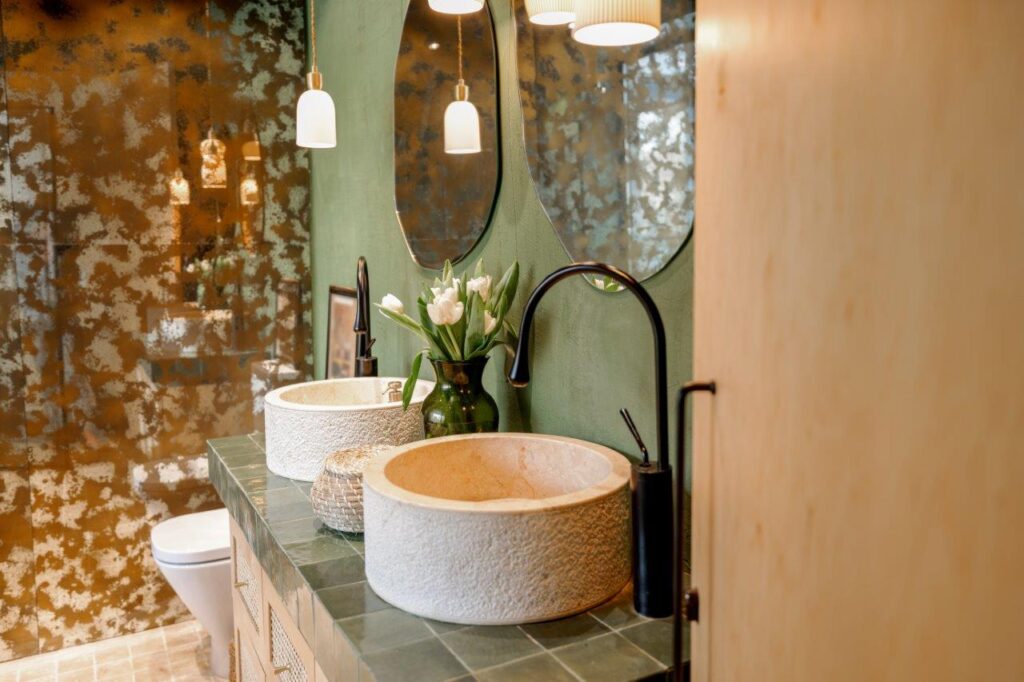
Areas of Utilization in Bathroom Design
- Vanity Tops
- The most common use of granite or marble in bathrooms. It creates a durable, elegant surface for daily use.
- Tip: Use polished granite for a glossy look or honed marble for a matte, modern feel.
- Backsplashes
- Extend the vanity material upward to create a cohesive backsplash. It protects the wall and adds visual interest.
- Example: A client paired a granite vanity top with a matching 4-inch backsplash for a seamless design.
- Shower Thresholds and Benches
- Use the same stone for thresholds, benches, or decorative inlays in the shower. It ties the design together while showcasing the beauty of the stone.
- Accent Pieces
- Incorporate stone remnants as accents, such as soap holders, window sills, or niche shelves.
- Example: Leftover marble was cut into a soap dish, creating a custom, luxurious touch.
Benefits of Choosing Granite or Marble
- Timeless Appeal
- Both materials elevate the bathroom’s aesthetic and increase the property’s value. They never go out of style.
- Durability
- Granite withstands heavy use and resists scratches and heat. Marble, with proper care, can last a lifetime.
- Customizability
- Each slab of natural stone is unique. This allows you to create a one-of-a-kind bathroom design.
- Low Maintenance
- Granite, once sealed, is easy to clean and resists stains. Marble may require more care but compensates with its unmatched beauty.
- Enhanced Functionality
- Natural stone is not just beautiful but also functional. It resists wear and tear, making it ideal for high-moisture environments like bathrooms.
Real-Life Success Stories
- Elegant Efficiency: A family with three children chose beige granite for their bathroom. Its durability stood up to daily wear, and the warm tone added a cozy vibe.
- Luxury Retreat: A couple upgraded their master bath with white marble and gold veining. It created a spa-like atmosphere that felt indulgent every day.
- Rustic Getaway: For a countryside vacation home, green granite complemented wood accents and gave the bathroom a warm, organic feel.
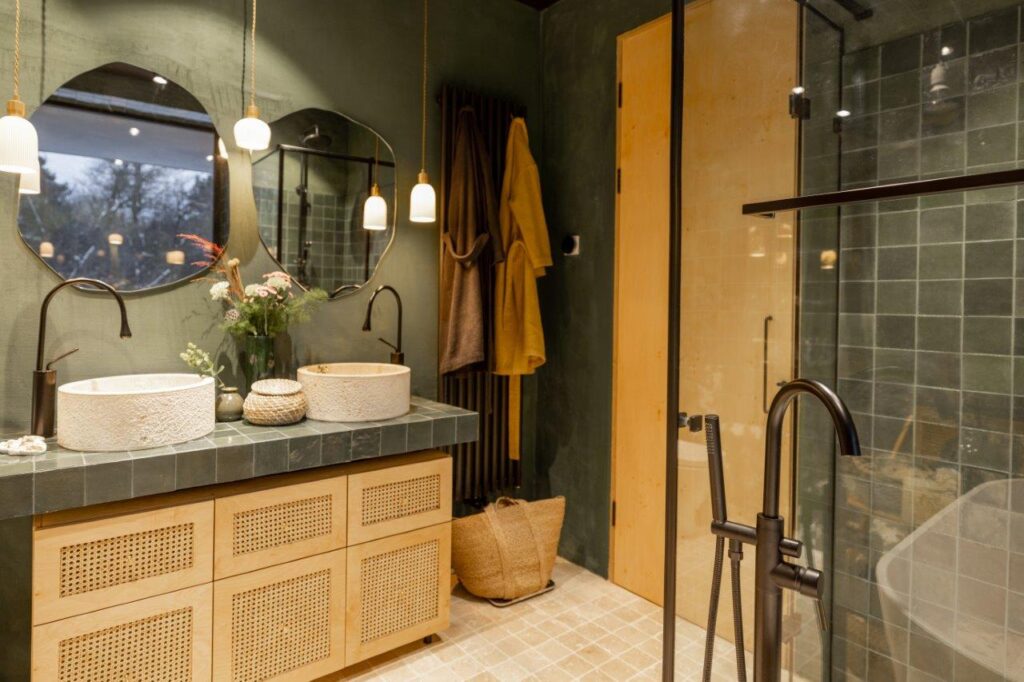
Sealing, Maintenance, and Pairing Granite or Marble with Accessories
Sealing Granite and Marble
Proper sealing is essential to maintain the beauty and longevity of natural stone. Both granite and marble are porous materials, and sealing protects them from stains, water damage, and wear.
- Granite Sealing
- Frequency: Seal once a year or as needed. To test, place a few drops of water on the surface. If it absorbs in 5-10 minutes, it’s time to reseal.
- Process:
- Clean the surface with a pH-neutral cleaner and let it dry completely.
- Apply a stone sealer with a clean cloth or sponge in thin, even layers.
- Let it sit for 10-15 minutes, then wipe off excess sealer with a dry cloth.
- Allow the sealer to cure for 24 hours before use.
- Marble Sealing
- Frequency: Seal every 6-12 months due to marble’s higher porosity.
- Process:
- Use a specialized marble sealer to avoid discoloration.
- Follow the same steps as granite sealing but take extra care to remove any excess product to prevent streaking.
Maintenance Tips
- Daily Cleaning
- Use a soft cloth or sponge with warm water and a pH-neutral stone cleaner.
- Avoid harsh chemicals like vinegar, bleach, or ammonia, as they can damage the surface.
- Dealing with Stains
- For oil-based stains: Use a poultice paste of baking soda and water. Leave it on the stain for 24 hours before wiping clean.
- For water stains: Buff gently with a dry cloth or a marble polishing product.
- Preventative Care
- Use coasters under toiletries or glassware to avoid rings or stains.
- Clean spills immediately, especially acidic substances like lemon juice, wine, or coffee.
Pairing Stone with Bathroom Accessories
- Matching Hardware
- Granite: Works well with stainless steel, chrome, or brushed nickel for a sleek look. For warmer-toned granite, consider bronze or gold fixtures.
- Marble: Complements polished brass, antique gold, or matte black hardware, depending on the design theme.
- Choosing Sinks and Faucets
- For lighter stones like white marble, a white or undermount sink keeps the look seamless.
- Darker stones like black granite pair well with vessel sinks for a modern touch.
- Coordinating Tiles
- Match the backsplash or floor tiles with subtle tones found in the stone to tie the design together.
- Example: If your marble has gray veining, consider gray subway tiles for the shower wall.
- Accents and Decor
- Use stone remnants for accessories like soap dispensers, toothbrush holders, or trays.
- Add soft elements like towels, rugs, or curtains in colors that complement the stone. For example, beige granite pairs beautifully with earthy greens or warm golds.
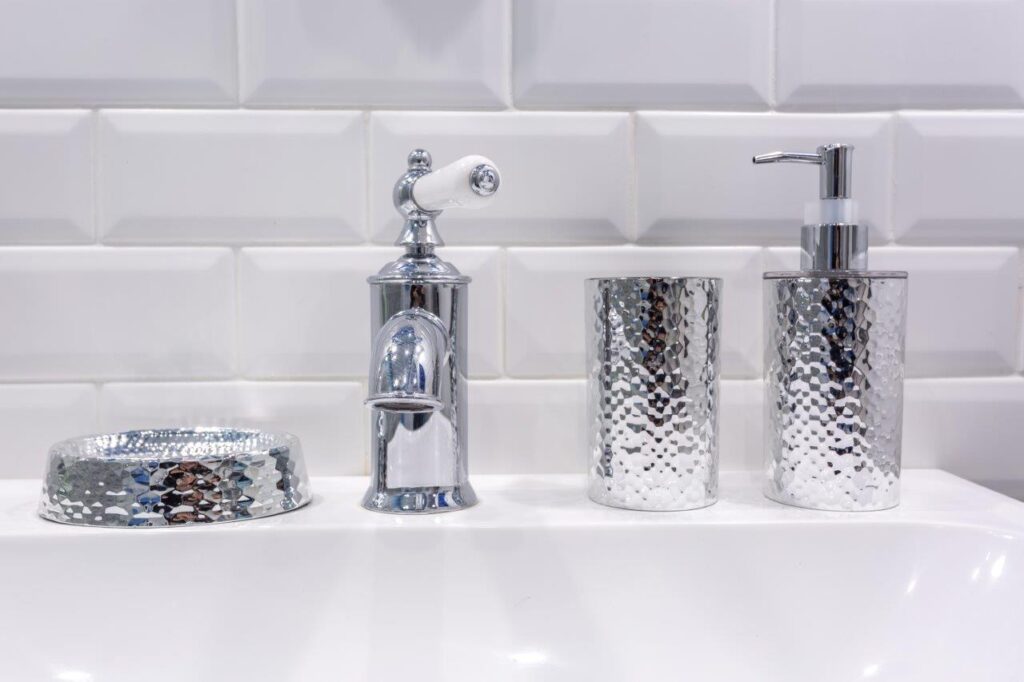
Benefits of Sealing, Maintenance, and Thoughtful Pairing
- Enhanced Durability: Sealing prevents damage and prolongs the life of the stone.
- Effortless Cleaning: Routine maintenance keeps the surface looking polished with minimal effort.
- Cohesive Design: Matching hardware and decor with the stone creates a harmonious and stylish space.
- Personalized Touch: Unique pairings allow you to express your personal style while ensuring functionality.
Example from Experience
A client with a black granite vanity chose matte black faucets and a gray tile backsplash for a modern, monochromatic look. They sealed their granite yearly and installed a matching soap dish from leftover granite. The result was stunning and practical—durable enough to withstand daily use and elegant enough to impress guests. So hey, why not? 🙂

